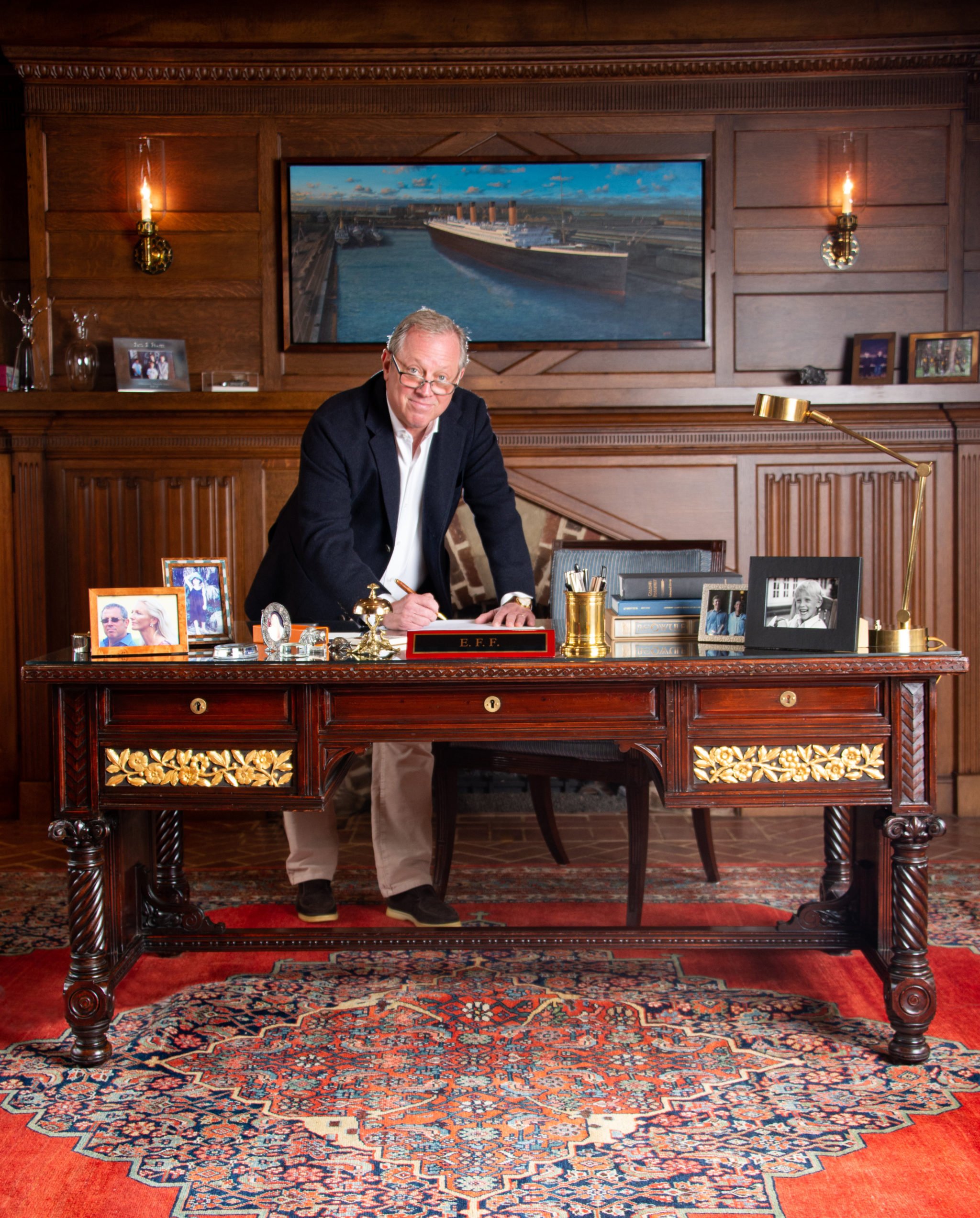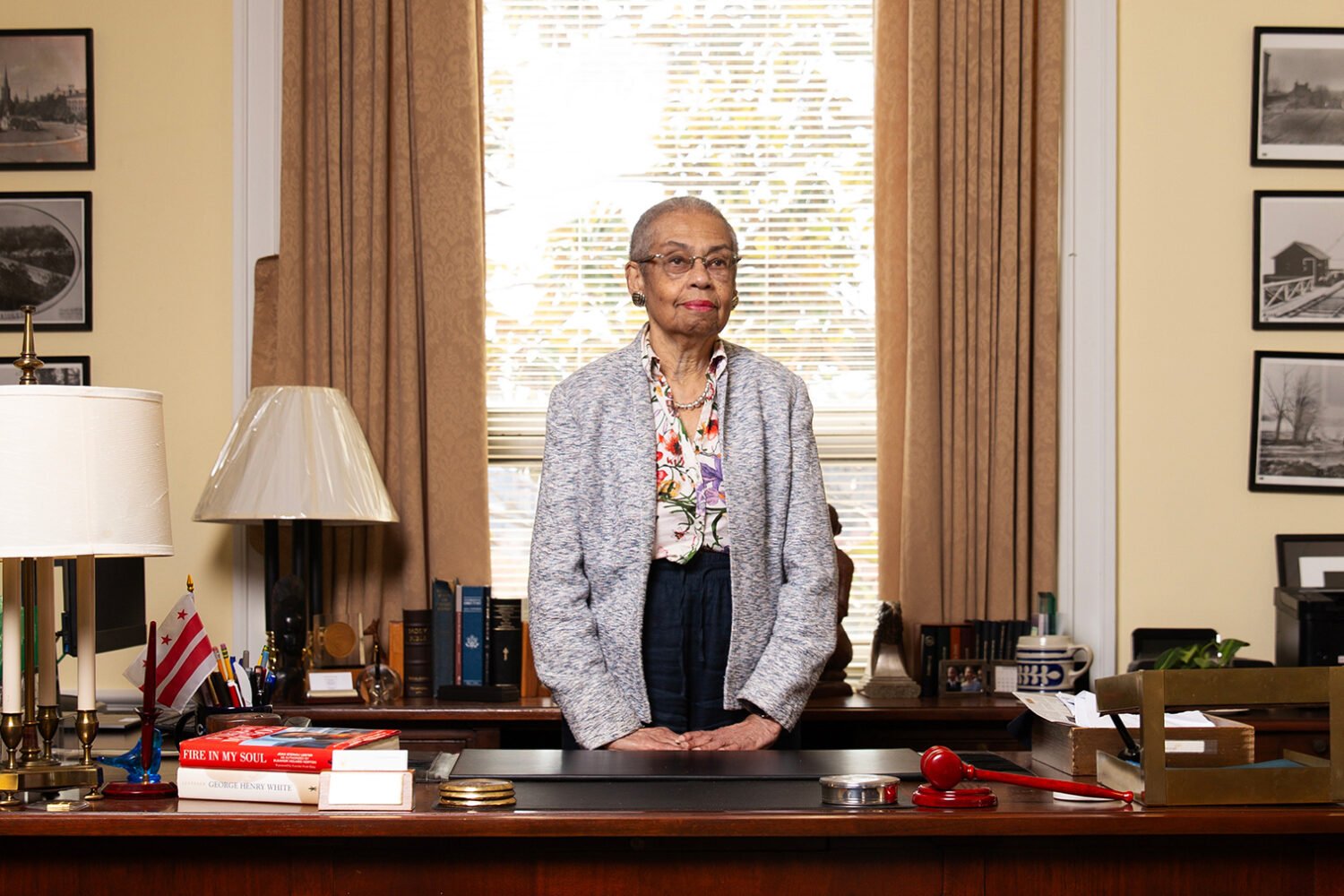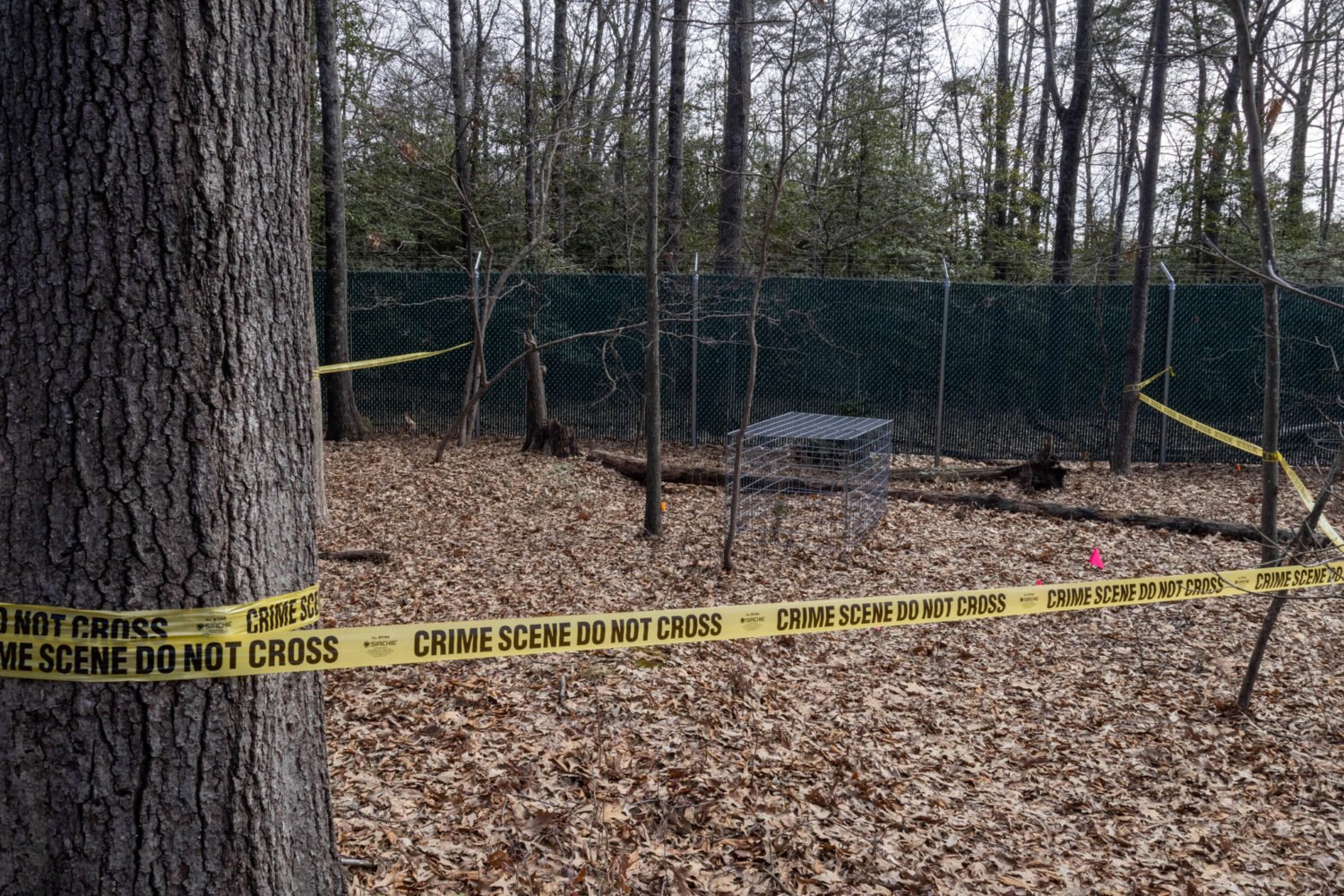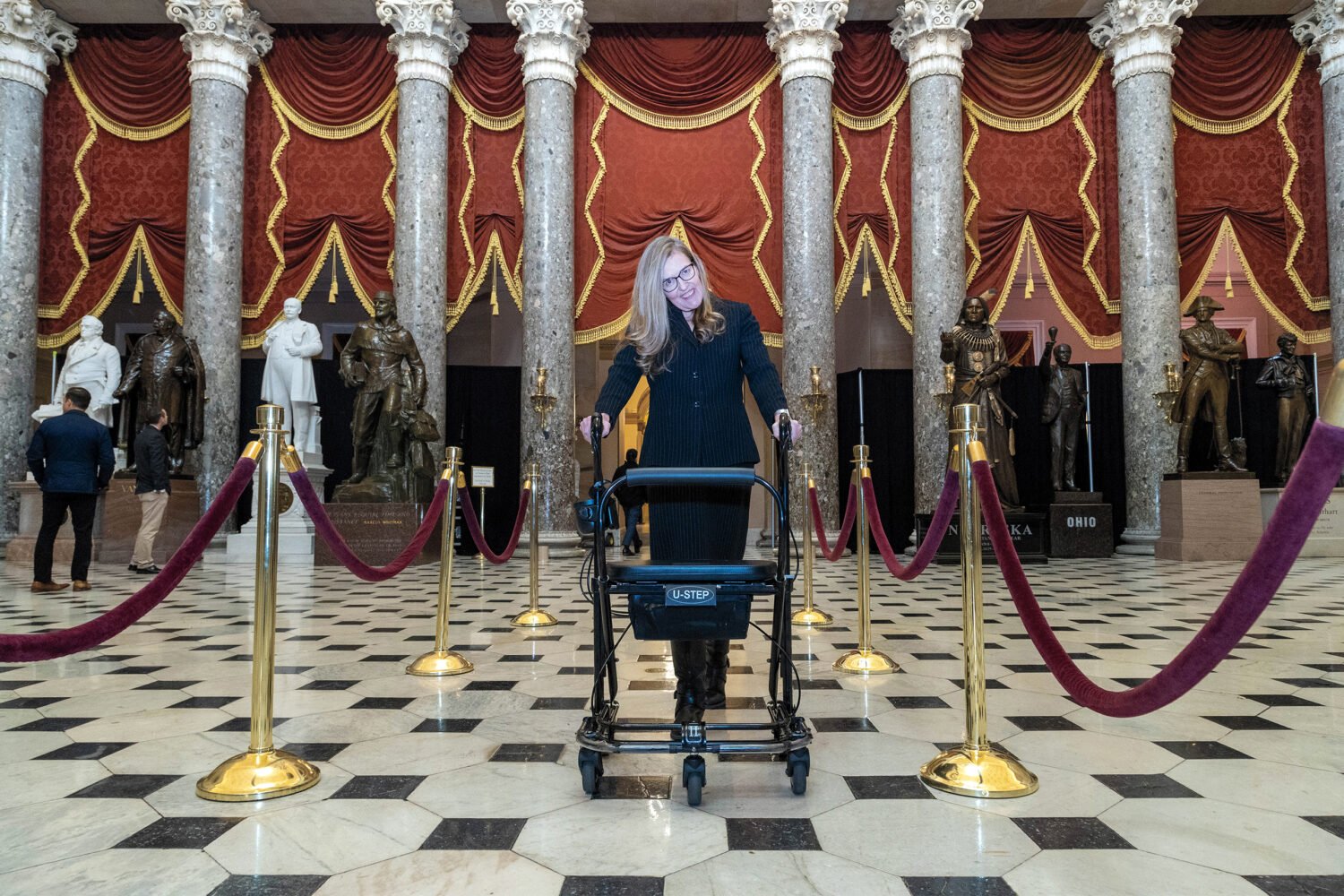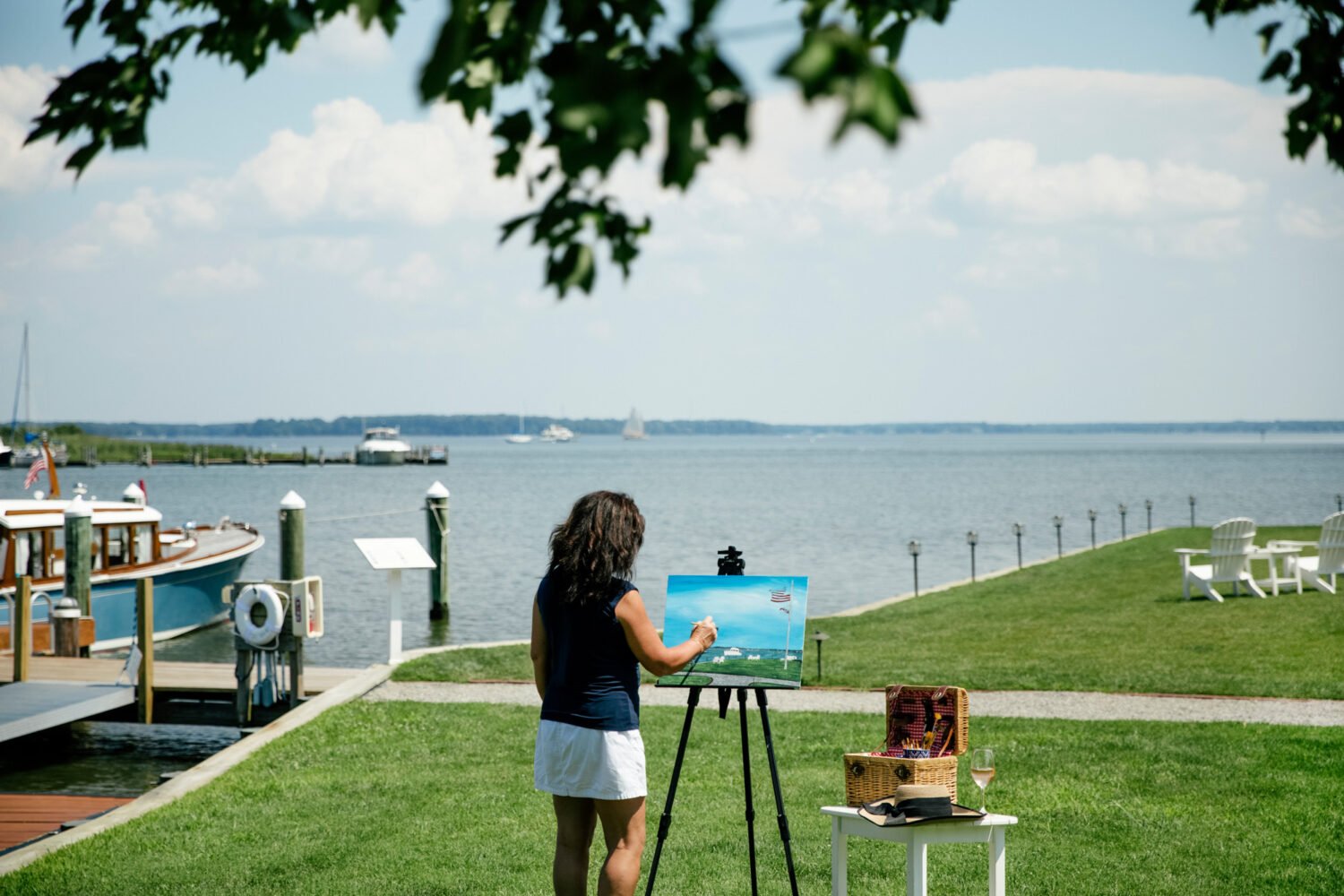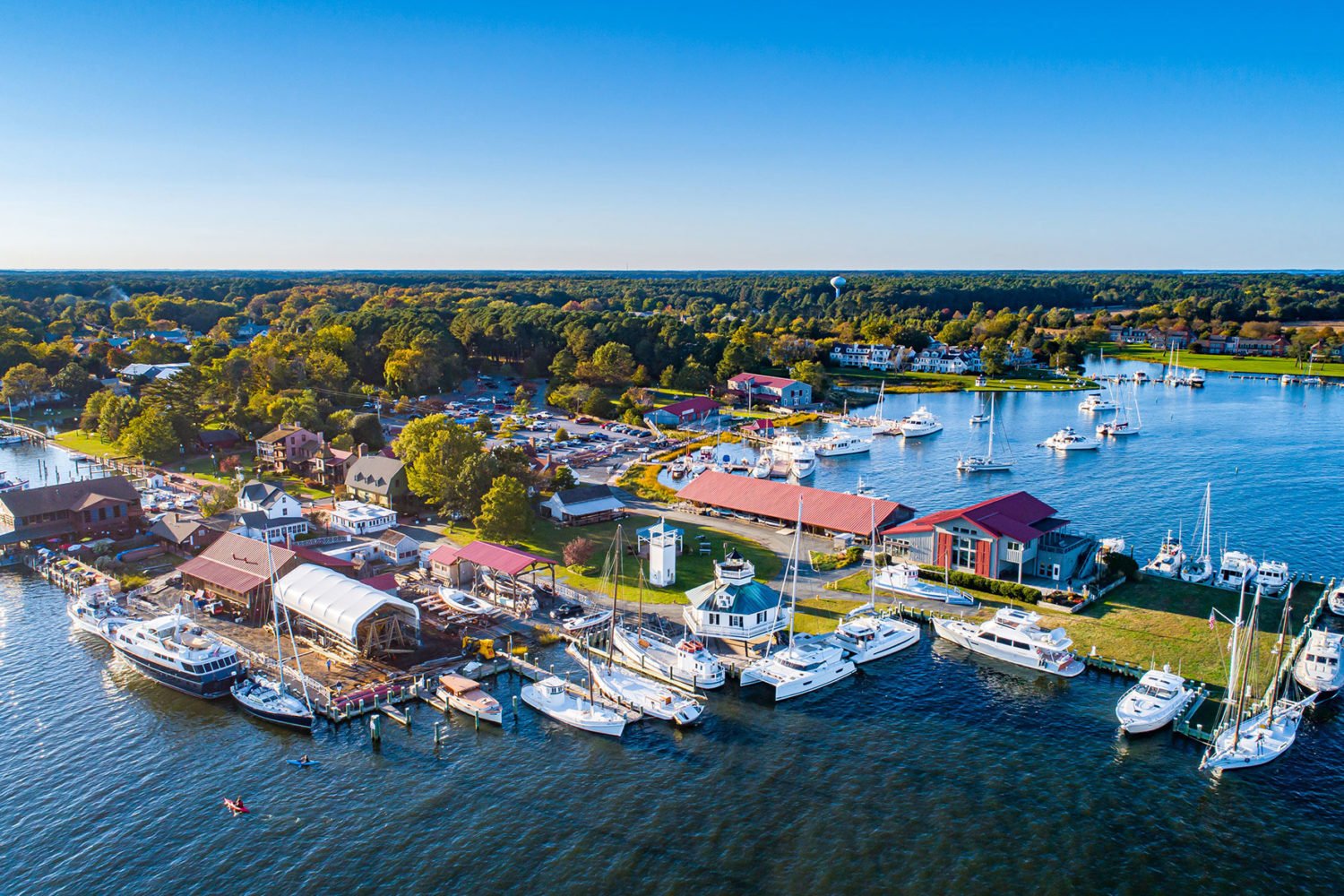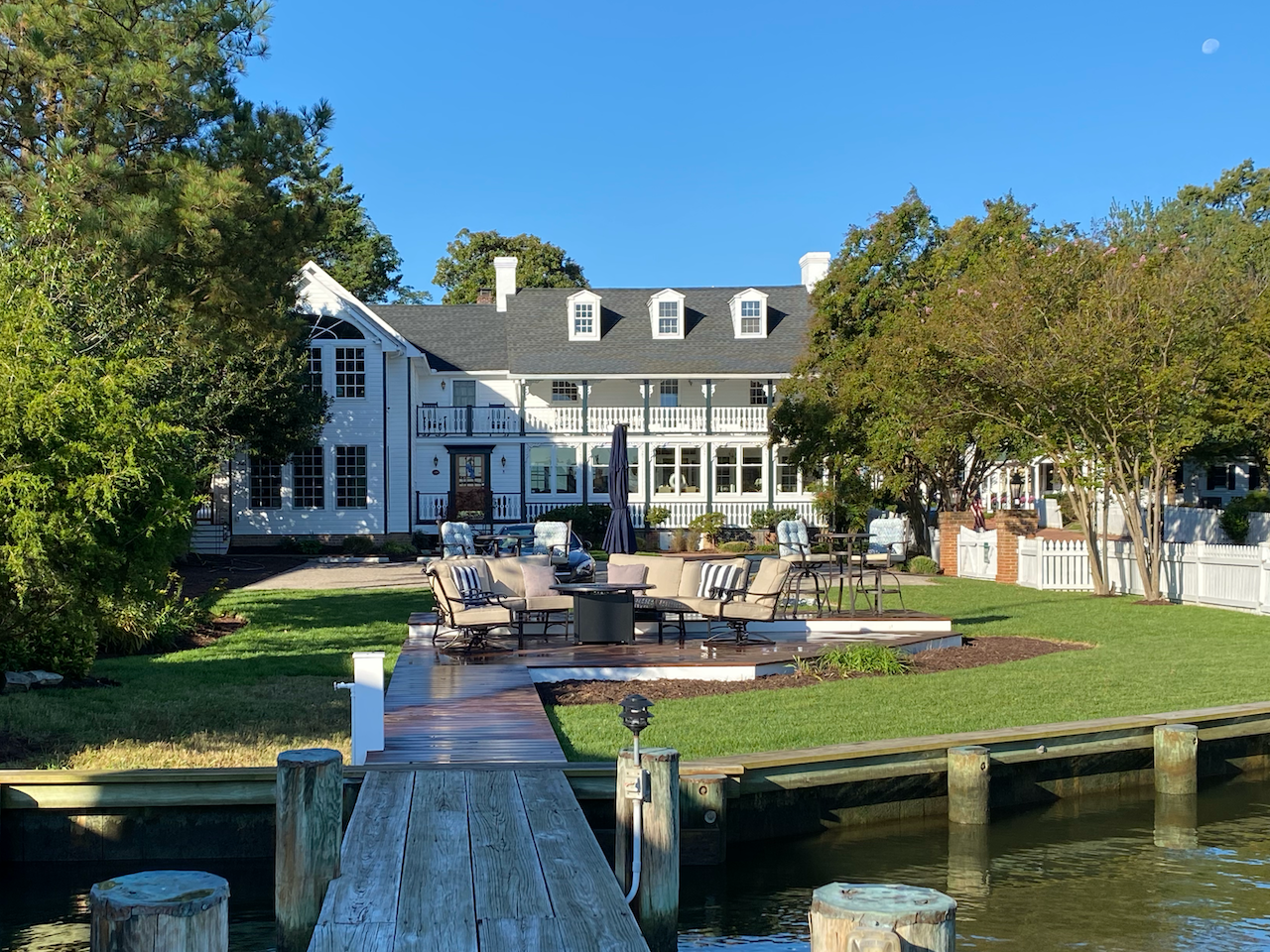You could say it all started with a bundt cake.
Paul Prager and his family had been flying via helicopter between Manhattan and Easton, Maryland, for many years—Chesapeake Bay retrievers in tow—splitting time between their five-bedroom Fifth Avenue co-op perched over the Met and their 250-acre estate on the Miles River, called Maiden Point Farm. But Prager, a self-described “bundt-cake guy,” could never find a slice quite like those of his childhood. So, as a certain kind of tycoon with a sweet tooth might be tempted to do, he decided to open a gourmet European cafe. A space along Easton’s historic Federal Street was designated and a name (Bundt) selected. Then, as often happens with Prager projects, everything escalated.
“Next thing I know, I’m building this Austrian fine-dining restaurant,” says Prager of what’s now Bas Rouge, a glamorous 28-seat salon with $100 tasting menus and a genteel weekday lunch where the must-get item is a $37 veal schnitzel. “I thought, Why start at the end of the meal? I should start at the beginning. And then I’m buying furniture”—a stunning antique Lobmeyr crystal parlor chandelier, 19th-century German hunting oils—“and thinking we have to make it more elevated. It’s a reflection of my process: I start, then I get enthusiastic, then I get really enthusiastic, and then we get the finished product.”
The cake never made it onto the menu, but now it’s the signature sweet at his neighboring market/wine bar. Turns out Prager is the kind of guy who can build his Bundt and eat it, too.
Easton’s dining scene, while one of the best on the Shore, has never seen the likes of a European tasting room with caviar service and a cellar that can produce a $1,980 Burgundy Pinot on a whim. Founded in 1710, the town attracts gallery and boutique shoppers, Waterfowl Festival–goers, and a few bigwig weekenders like Dick Cheney and Donald Rumsfeld. Still, it doesn’t lure the throngs of tourists who descend on the nearby St. Michaels waterfront. Prager—the 62-year-old founder of a multibillion-dollar infrastructure holding company, Beowulf Energy—would very much like to change that. After his menus were printed, he envisioned a new future unfolding along Easton’s red-brick sidewalks. A dynamic small town. A culinary destination. A weekend escape where he could cruise ten minutes from “the farm” in one of his Ferraris for a perfect espresso.
“I don’t play golf,” says Prager. “I grew up in Brooklyn. The only thing I do with great consistency is eat and drink wine.”
Beginning in 2015, he started building a hospitality empire in the heart of the historic district. Much was inspired by personal taste—“and lucky for Easton,” one customer observed, “the Pragers have excellent taste.” Prager’s only daughter, Paulena, craved a Chopt-style salad bar. “But I got carried away,” Prager says. The result: Sunflowers & Greens, an airy cafe that offers toppings such as Russ & Daughters salmon and French rosé on tap. His wife Joanne’s love of single-malt Scotch—and her affinity for sporting clays—inspired the roguish Stewart bar, with its tartan carpets and tufted leather sofas. Prager’s sweet tooth was satisfied with Bonheur, a Coco Chanel–style pie-and-ice-cream boutique—further Pragerized with vintage port by the $35 ounce.
What else does a small town need? A cold-press juicery with an artisanal-honey bar and sipping broths. A stately coffee shop inspired by “the Golden Age of Sail.” A by-appointment-only porcelain-and-crystal boutique, Benjamin, whose first sale was a $12,818 Lobymer jardinière. And, “because every town should have a bookstore,” a bookstore (though Flying Cloud Booksellers might be among the few with commissioned artwork).
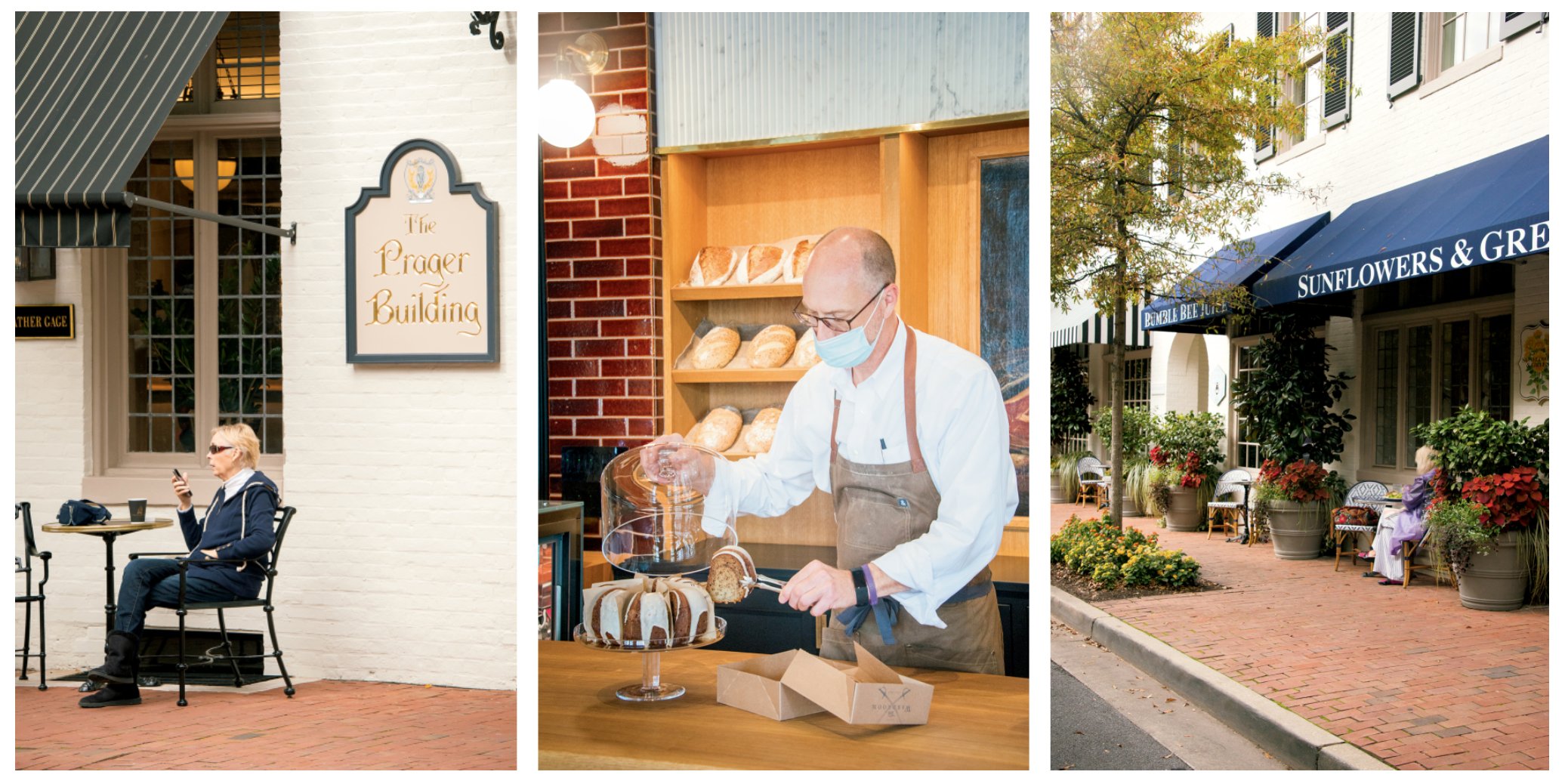
Prager’s “favorite shop on the planet” is Dallmayr in Munich—think a German “Dean & DeLuca on steroids.” So this summer, Prager opened his most ambitious project to date: the Wardroom, a European-style emporium with a French-chocolate counter, cheese cave, charcuterie room, reservation-only wine cellar, and 24-bottle Enomatic wine system where customers can pour their own Sancerre by the glass. (He built a similar one in his home, minus the credit-card machine.) At night, Cuban music thrums and the market morphs into a gnocchi bar. An Eastern Shore gnocchi bar? “I like gnocchi,” says Prager with a shrug.
Now he’s plotting a Roman-style pizza takeout; an Italian joint with stuffed pastas and grilled meats; and a bakery, Lauda’s, named after the famed racecar driver. Those are only what’s opening within the year.
Today, more than a decade after he bought his first piece of property there, Prager owns roughly 50 percent of Easton’s downtown—plus four farms totaling 1,000 acres, kennels housing the family’s Westminster-award-winning show dogs, and, lesser known, much of the land around Easton Point, the town’s soon-to-be-developed waterfront.
At first blush, the opulence and growth plans all seem like a time capsule from relaxed, comfortable, pre-Covid America. But actually, as in many rural towns that have become suddenly desirable to a certain kind of homebuyer, the pandemic has sped things up for Easton. Since Covid-19 hit, the Eastern Shore has become a magnet for wealthy urban refugees fleeing DC and New York. And Paul Prager’s culinary playground has every style of gnocchi they might want.
“I love this town. I look in the mirror, I’m a sixtysomething short, fat Jewish guy, and I almost feel like a rock star,” says Prager. He’s being sarcastic, but in reality, the town loves him, too. On any given afternoon you can spot him glad-handing on Federal Street like an unofficial mayor—gray hair, collared shirt, your average local energy mogul. Unless you’re one of the people unhappy to have gone to bed in Easton and woken up in “Pragerville.”
Talbot County—among the wealthiest in Maryland, with a median age of 50—has long been divided between past and present. On one side of the 1794 courthouse is a Confederate monument to the “Talbot Boys,” which has survived every cry to raze it. On the other is a bronze of Frederick Douglass, the area’s most famous native son. In 1878, the abolitionist leader, by then an elder statesman, returned to town, becoming the first African American guest at Easton’s Brick Hotel. The building is Prager’s now. He helped sponsor the statue, too.
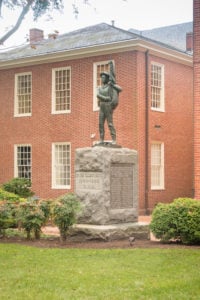
I first met Prager in June 2019 in his office, which flanks the courthouse and main square. The oak-paneled space looks more like the library in an English manor than the hub of “the campus,” Prager’s nickname for the two-block complex that houses the Beowulf Energy offices and multiple venues in his Blue Point Hospitality group. Light filtered through the windows, hitting a painting of his wife and daughter—willowy, pale-eyed, and stately as swans. Prager sat behind an imposing Gilded Age desk, relaxed in a lightly crumpled oxford and jeans. The dichotomy is very Prager—his is a presence that commands respect, but he’s also generous, quick to a joke, and softens whenever he talks about family, or food and wine (which he does often). One can understand why his employees call him Mr. Prager, or if they’re chummy, Mr. P.
When Prager began creating the campus in 2008, the historic Federal-era buildings had fallen into disrepair. Some were abandoned, an impact of the recession. Prager restored space after space, leasing offices to lawyers, doctors, and other businesses while transforming a swath of Federal Street into a Blue Point restaurant row. “This thing started as trying to bring some vigor and vitality to a small town,” says Prager, Brooklyn accent light on the tongue. He adds: “The offerings here were very different than what I imagined small-town country life could be. It’s a luxury. It’s amazing to go to a place where time slows a little bit.”
The Hamptons might seem like the white-glove fit for a family whose former $19-million Manhattan apartment shared an address with Guggenheims and Vanderbilts. But Joanne—“a quiet, ethereal woman,” says Prager—didn’t care for the “go-go Hamptons guy” scene. And he was already enchanted by this area, having graduated from the Naval Academy in 1980.
Annapolis, in fact, helped lay the foundation for his culinary empire. He grew up in Brooklyn, the grandson of Austrian and German Jewish immigrants. His parents each worked two jobs. “My mom listened to the opera, and still does,” says Prager. “A lot of big family meals and robust discussions.” Not wanting to cause financial stress, he chose the Naval Academy for college, where one of his sons now plays varsity squash and where Prager sits on a board.
The Navy—which enabled Prager to sail the world as an officer—also provided the opportunity for him to fine-tune his palate: Shore leave meant a chance to eat. Then it was on to Wall Street, where he met his wife. She was a banker, a blonde, a Harvard javelin thrower, a onetime Town & Country cover girl—and a catch. Before their first date, Prager bought combs at Bergdorf’s for her Rapunzel-esque hair, which at 56 she still wears to her waist.
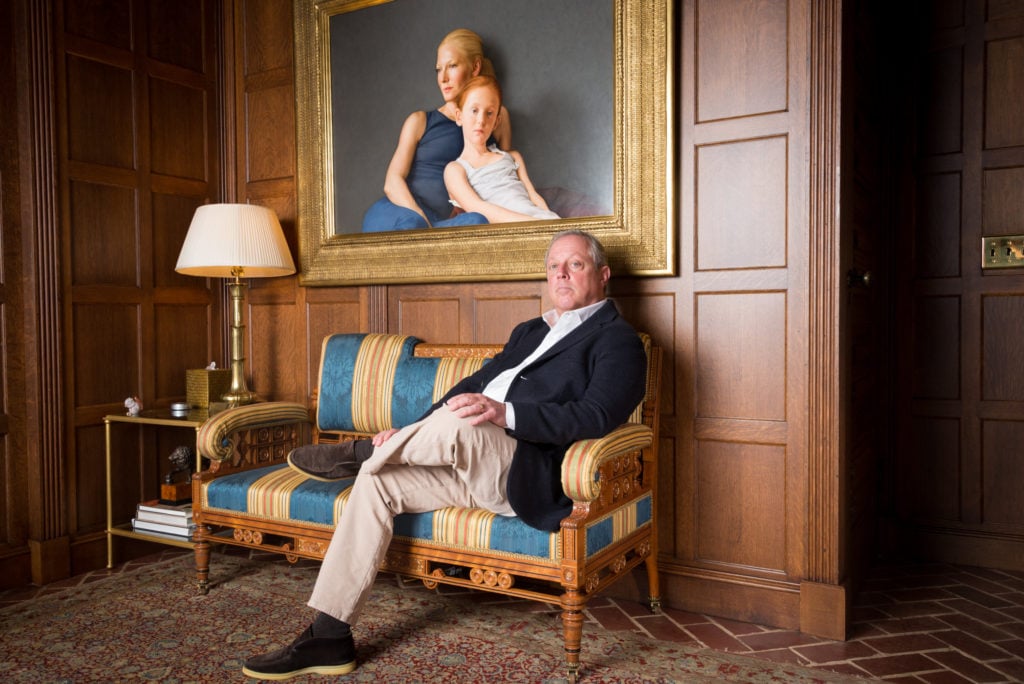
Prager founded his company, which acquires and develops industrial power, oil, and gas facilities, in 1990. He and Joanne had four kids, and life became, as Prager puts it, “very curated.” The duo practically owned a prized corner banquette at Montrachet in the ’80s, became regulars at Marea and Armani Ristorante on Fifth Avenue, and hosted their four children’s bar and bat mitzvahs at three-Michelin-star Le Bernardin. But when it came time to unwind, they chose the low-profile Eastern Shore—albeit with ample guest cottages so they could entice their friend chef Eric Ripert to visit.
They were hardly the first wealthy weekenders in Talbot County. In Kiplinger’s 2020 ranking of “25 Small Towns With Big Millionaire Populations,” Easton clocked in eighth, beating out Key West and Breckenridge, Colorado. But unlike tony tourist magnets, the Eastern Shore’s vibe is reserved—historically, and purposefully, so. Development is kept to a minimum. As a Washington Post article, eastern shore gentry, noted when a wealthy German couple purchased an estate in 1980, “Foreign investment may stir xenophobic fears elsewhere, but the Eastern Shore gentry still prefer an invasion of affluent aliens to anyone who might alter its private peninsulas and uncluttered shore lines.”
Or, as a cruder local saying goes: “Welcome to the Eastern Shore. Now go home.”

Prager honored tradition when he landed on Maiden Point in 2003. The gated drive on his 250-acre peninsula meanders along wildflower fields before reaching the farm—more like a small village with 20 structures including a gleaming Tidewater Colonial main house, English-style gardens, a pool, a tennis pavilion, a squash court, a former barn housing Prager’s wine collection, a two-pump gas station that fuels two garages’ worth of cars, and dueling docks loaded with jet skis and leisure boats. A Navy flag, “don’t give up the ship,” flies high above.
“His build-outs are 120 percent over the top,” says Blue Point’s executive chef, Harley Peet, an alum of the Inn at Perry Cabin in St. Michaels who has spent the last seven years with Prager. “When he decides to open a sandwich shop and you see marble roll in, and fine art, you think, Christ, now I have to keep up with that. It’s friggin’ tricky—Mr. P has pretty impeccable taste, and he’s not afraid to spend. You’ll never walk into another sandwich shop that has hundreds of thousands of dollars of aesthetic finishings.”
Prager’s restaurants smell expensive, thanks to the in-house florist he employs. They even feel expensive, the result of every possible style of takeout box passing through his fingers for inspection. “I’m a very tactile person,” he says one afternoon in the coffee shop, handing me a ridged cup of Mariage Frères, which, even if you don’t know it contains Parisian tea leaves, feels more substantive than flimsy Starbucks ever could.
There were calls for a Blue Point boycott. The Star Democrat ran a bitter op-ed from one resident, headlined “KING PRAGER.”
No, “this could never have happened if we were building a business plan,” Prager says. Establishing a profitable restaurant empire wasn’t the point initially. The idea was more to fashion something irresistible and wait for the rest to follow. “This is Kevin Costner—‘If you build it, they will come.’ ”
And with the pandemic, they came.
While the hospitality industry floundered on a national scale, Sunflowers & Greens, which became Blue Point’s hub for carryout during the spring lockdown, nearly doubled its revenue over the previous year. Once Maryland reopened for indoor dining in June, the group’s sales skyrocketed by 300 percent compared with 2019.
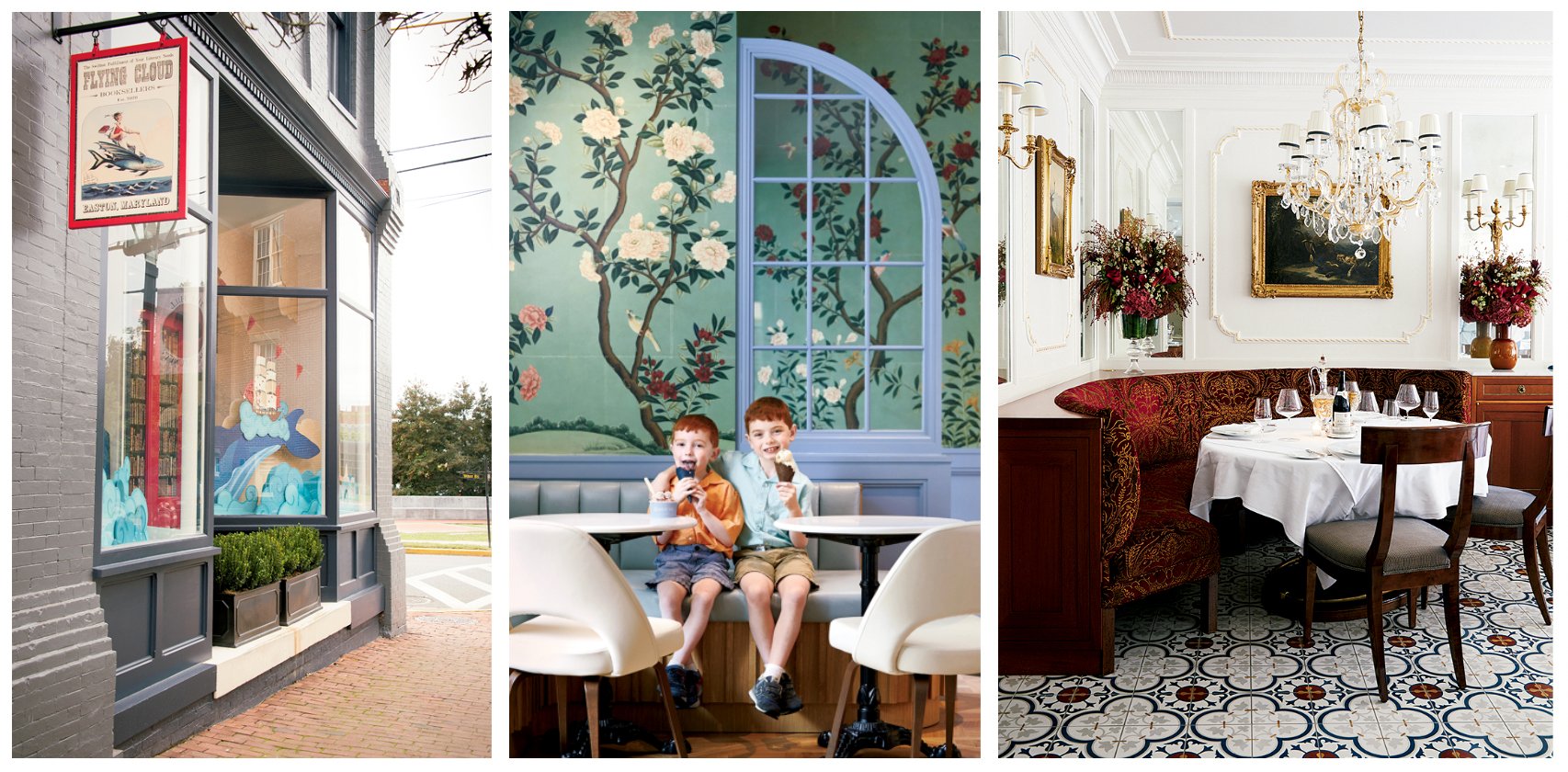
Part of the bump came from the new demographic flooding into Talbot County from Washington, Philadelphia, and New York—not just the usual retirees and weekenders but affluent professionals and families breaking free from their tight pandemic enclosures. Real-estate agent Cliff Meredith, who has specialized in luxury Eastern Shore properties for 35-plus years, says the inventory was so low by July that finding homes in the $800,000-to-$2-million range was “virtually impossible.” (Prager himself unloaded “two little investment houses” in the $2-million range.)
“Buyers from New York, I used to see half a dozen a year. Now we get half a dozen requests a week,” says Meredith. “Covid has fueled a fire I’ve never seen before.”
Prager took the opposite tack from most restaurateurs. Instead of stretching ingredients, Chef Peet “cleaned out” his kitchen every Saturday, delivering food to help hospital workers, which allowed Sunflowers & Greens to “start the week fresh.” Blue Point kept all 60 full-time employees on regular salary and benefits, even if they weren’t working. While restaurateurs across the country struggled to make ends meet, Prager went long on new projects for his 50-plus contractors, front-loading his accounts with purveyors. “I did that to make a point,” he says. “Hey, the chips are down, but look at us. We’re doing it right. So when you get special stuff in, remember we’re just as important.”
Getting “the special stuff”—Japanese uni, Alba truffles—was always a challenge in out-of-the-way Easton. But with many fine-dining temples temporarily shuttered and Prager dangling his wallet, sourcing luxe items via airmail suddenly became easier. He began sourcing luxe people, too. “My chefs were a little burnt out with the pandemic, so I decided to bust their balls,” he says.
He launched a cooking series that doubled as a culinary camp, flying in some of New York’s top talent to cook alongside his crew. Sylvain Portay, former corporate toque for Alain Ducasse, came; so did Armani head chef Michele Brogioni (“He was Putin’s chef, a fascinating guy,” says Prager); and Hirohisa Hayashi of the Michelin-starred omakase room Hirohisa. The visiting chefs lifted the velvet rope to exclusive food purveyors, such as Brogioni’s “tomato guy” in Miami.
And the lunches! The chefs often served multi-course affairs to Prager and guests in his courtyard—an alfresco sanctum behind the restaurants, decorated with a French Louis XIV-era fountain and a massive, all-weather portrait of Zach, his late Chessie. The meals—which could stretch into late afternoon—sometimes caused Joanne to call the kitchen line to scold the chefs. (“She’s on me about my weight.”) Saturday nights, per tradition, the couple hit their corner booth at Bas Rouge, Prager relishing the encore.
With some of the imports having decided to stick around more permanently—most notably, Le Bernardin’s longtime maître d’ and gatekeeper—Prager has Michelin stars in his eyes. Peet, meanwhile—the kind of chef who prefers plating to making the rounds—sounds more focused on winning over his neighbors. “I want my team and Mr. Prager to get the recognition we deserve, and it’s tough in a small town,” he says. “It’s easy to go and take [Prager’s] kind of money, his taste, and his hunger and plug it into a city with immediate success. It’s a hundred times more difficult to plug it into a small town where there are some people who dislike what you’re doing.”
Given the Eastern Shore’s sensitivity to outsiders, the incursion of a spendy New Yorker might have offended some locals no matter the moment in time. This isn’t the Hamptons!, the complaint goes. But the pandemic seems to have a portion of town feeling hypersensitive lately. The swell of newcomers and the uncanny timing of Blue Point’s expansion didn’t just change the feel of the place—they exposed how much influence Mr. P has come to wield.
“Fixing governance in a small town—it’s a good thing. And now I know where our detractors are.”
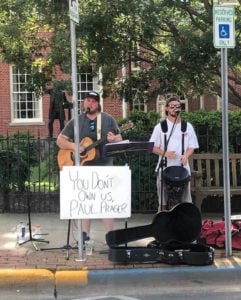
It all came to a head in July, when a tourism nonprofit called Discover Easton mapped out a “streetery” in the historic district, demarcating a stretch of roadway where ordinarily indoor eateries can serve pandemic-era diners outdoors. Not everyone’s business was thriving—places like the local hangout Washington Street Pub were hurting—and the group want-ed to help. But the day before the streetery opened, the town council held a special vote and unanimously quashed the plan. Turns out Discover Easton hadn’t consulted a number of business owners, including the man who owned half of downtown. And, as he said at the meeting, he wasn’t a fan.
“We’re negotiating with a terrorist,” Washington Street Pub owner Doug Kirby grumbled during the meeting.
A town/crown battle erupted. Even more than Prager’s objection to the streetery—poorly planned and disruptive to traffic and ambulances, he argued—some Eastonians were enraged by an article in the local newspaper, the Star Democrat. The story reported that Ross Benincasa, head of Discover Easton, alleged that Prager had called his group with a threat: Prager would cease investing in Easton, close his businesses, and cut off money to local causes if the streetery went forward. “Benincasa,” the paper wrote, “said Prager told the group he invests too much in this ‘expletive town.’ ”
The newspaper did not reach out to Prager for his comment, and he says he was both misquoted and misrepresented by Benincasa. But the damage was done. Protests ensued. A Depeche Mode cover band that had been booked for the promenade instead hung a big sign—YOU DON’T OWN US PAUL PRAGER!—and sold matching T-shirts while it played. There were calls for a Blue Point boycott. The Star Democrat ran a bitter op-ed from one resident, headlined KING PRAGER.
“At some point, it becomes a deterrent to anyone else coming to open businesses,” says Scott Harris, an Easton local and a former Tastee Freez franchisee. “They’ll know Paul Prager controls this town and if I want to do XYZ and he doesn’t like it, he’ll threaten and the mayor and the council will back down.”
Says Prager: “I’m an opinionated guy. But I don’t threaten.”
In the Easton Facebook Community Forum, jibes took an ugly turn, including personal attacks on Prager and his family. One day, Prager himself hopped onto the Bonheur Ice Cream & Pie account to deliver a biting, nearly 3,500-word response to Len Foxwell, who was then chief of staff for Maryland comptroller Peter Franchot. A vocal Prager critic, Foxwell had called Prager a “bully.”Bonheur/Prager called Foxwell a “snake in the grass.” Referencing Foxwell’s sister, who works for Blue Point, Prager wrote: “I adore your sister, love her, and I just have to wonder—did she get all the attention when you were kids, were you neglected, this need you have for so much attention? Get your facts right or at least try to come [up] with a better story.”
Foxwell retorted: “The people of Easton are understandably frustrated when a dilettante . . . exercises his outsized political and economic influence to subvert the best interests of our town . . . Have another drink, Paul, and another piece of $50 pie.”
For his part, Easton’s five-term mayor, Robert Willey, says there’s nothing to the claims. “Paul certainly has his ideas, but the idea of him trying to influence the council—that wasn’t an issue,” says Willey, adding that Prager’s been “a blessing” to downtown. “He’s putting in things that Easton lacks, and even if it doesn’t lack them, it benefits the others in town.”
Tempers calmed shortly thereafter—though the pandemic-drama took its toll. The promenade never came to fruition. Mayor Willey later cut all city funding to Discover Easton—eliminating the nonprofit, which had been events-focused, and thus Benincasa’s job. The town diverted the resources to an economic-development group helping with the Easton Point waterfront, much of which Prager owns.
When Prager and I walked around town in August, he seemed nonchalant about the brouhaha. “Of the issues I discovered: First, if you’re rich, you have a problem. Second, if you’re rich and you have an opinion, that’s even worse. And the third thing: Everything Joanne and I do, we never asked for credit.”
The Pragers donate upward of $5 million a year largely to the area—hundreds of thousands for public and private schools, including full-ride scholarships for at least four children of Blue Point employees. As a pandemic graduation gift/pick-me-up, Prager gave every public-school kid in Easton—close to 500 students—a $25 Blue Point gift card. (He wanted to donate $180 per kid—18 is symbolic in Judaism—but the school board demurred.) Money goes to Easton’s hospital, the YMCA, the Rotary Club, the Talbot Historical Society. The Prager Family Auditorium, a downtown Easton arts-and-concert venue, will open in the spring and play home to Chesapeake Music. Shabbat services are held at Temple B’Nai Israel, a sleek, modern synagogue that was rebuilt in 2018 partly with Prager’s backing. The inaugural Prager Cup is slated for summer 2021, in which Flying Cloud, a 1930s log canoe Prager helped restore to the tune of $75,000, will race once again.
But if he never asked for credit, Prager wasn’t shy about sharing his opinions. “The easiest thing to do is give money, but I’m not a passive giver,” he says. “I have a view. If I’m going to be supportive, I want people to listen and to hear and to understand my perspective, and how that may help make things better.”
And after the promenade backlash, he seemed determined to let the know town how supportive he is. The Maryland Democrats, to whom Prager previously rented a small office, moved into a larger location downtown with fresh MARYLAND DEMOCRATS signs hung outside. (“I hated their furniture, so I made them throw it out and bought them new furniture,” says Prager. “So I am a control freak after all.”). When the Pragers recently gave $10,000 to Easton public schools for distance-learning services, they accepted an invitation for a photo in the local news for the first time—and sent Julia Foxwell, Len’s sister, who’s now their director of community outreach.
Asked if the drama ever made him reconsider his home in Easton, Prager is adamant: “I develop power plants in Pakistan. I’m not a terribly sensitive guy. If you asked me if it caused me to want to walk away? No, not at all. Would I buy another building here? Absolutely. Fixing governance in a small town—it’s a good thing. And now I know where our detractors are.”
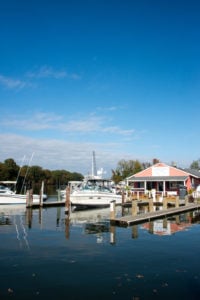
Regardless of how they’re getting along, Prager often declares his love of Easton—and Easton, more than ever, needs Prager.
His next project is a huge one: redeveloping Easton Point, the town’s industrial waterfront on the Tred Avon River, about a mile from the historic center and currently home to a defunct oil station and a small marina. Redevelopment plans for the once-vibrant 18th-century port have been floated and even launched over the past few decades. But the vast amount of money and time needed for the project seemed insurmountable. As did getting a dozen-odd private landowners on the same page. Until, of course, a certain capitalist with an eye for reinvention came along and bought, in Prager’s words, “almost all of it.”
Prager’s vision for the development is largely residential, as opposed to touristy, with “a SoHo vibe,” he says. “Urban, clean, contemporary.” Homes would be in the $450,000-to-$1.5-million range to attract more young people and families. Before anything happens, though, the town wants to annex some of Prager’s land, which falls outside the city line, in order to reap the tax benefits and have a say in the project. And Prager will want to be heard.
As he puts it, “We’ll allow you to annex us, you’ll accept our development plan, we’ll be best friends.”
In the meantime, other communities are nibbling at his pockets. Already, Prager says, he’s gotten pitches from developers from as far as Montana and as near as DC. He’s passed so far, but he is gearing up for an eventual Blue Point expansion, eyeing other tony red-brick neighborhoods . . . like Georgetown. “They know us, and it’s close enough to send our team,” he says. The vision isn’t just for a one-off shop; with the exception of Bas Rouge, Prager has ambitions to replicate his hospitality kingdom. “All of it.” And the bookstore, too.
This article initially appeared in the January, 2021 issue of Washingtonian.
